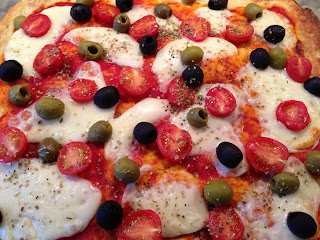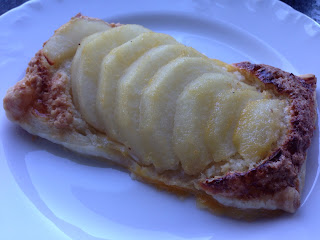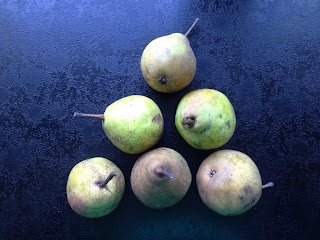Here comes another zucchini recipe. It just so happens that at the time I'm writing these posts it's zucchini season. On the other hand it gives anyone in zucchini season a chance to possibly find a new way to use this truly versatile vegetable. Like zucchini and carrot papardelle.
I really like zucchini and I prepare it in many ways. This particular idea is not entirely a gift of my creative intellect. Years ago, when I was just learning Italian, I watched a cooking game show called "La prova del cuoco" and I saw something similar being prepared. Honestly, at the time I didn't understand much and the visual spoke to me more than the audio. I do remember the cook using some white wine and corriander seeds (which didn't really appeal to me). What really inspired me was the way both zucchini and carrot were cut (or sliced off) with a vegetable peeler to resemble papardelle pasta. If you are not familiar with papardelle, it's a thin and really wide type of pasta.
I have really altered the original idea and made it my own. The only original components are the zucchini and carrot and the way it's cut. I also add garlic, leeks, and sometimes mushrooms (if I have some on hand and spare). It's a pretty versatile side dish, but I actually use it as the main dish with grilled salmon. It makes perfect for a light lunch or an evening meal.
Ingredients:
1Tbsp olive oil2 galic cloves, chopped
2 medium or fairly large zucchinis
2 medium or farily large carrots
1 leek
a bit of water or broth
salt and pepper
Peel and chop the garlic cloves.
Remove two or three outer layers of the leek. Cut off most of the green part and slice the rest into fairly thin wheels.
Peel the carrots and wash. Slice the carrot with a vegetable peeler as if you were peeling it. Keep rotating it, and try to slice it evenly on both ends. You probably won't be able to slice it all off so you just might have to eat the thin rest.
Wash zucchini and cut the tips off. Cut it with the skin as if you were peeling it with the vegetable peeler. If you keep rotating it you will get a nice green edge on most of the ribbons. Slice off only the flesh and discard the core with seeds.
Put a large frying pan over medium-high heat, heat up the olive oil, add the chopped garlic and fry until golden.
Add carrot strips and leeks and stir for a minute. Add zucchini strips and toss it all to coat and mix. It might be difficult at the beginning but the vegetables will soften and reduce in size.
Reduce heat to medium and continue sauteing for 10-15 minutes until all the vegetables turn soft. Season with salt and pepper.
If the pan gets to dry add a couple of spoons of water or broth. Let almost all the liquid evaporate.
Serve warm. It will serve 4-6 as a side dish and 2-3 as a main dish.
Mushrooms go great with this dish. Just slice a couple and toss with the garlic before you add all the vegetables.
The zucchini and carrot papardelle goes great with most meat and fish. It's really light and delicate in flavour. I absolutely love it with grilled salmon. I have a small electric grill and just season the fish with salt and pepper and grill for about 10 minutes (you might want to brush your grill or the fish with some olive oil). In time you cook the papardelle your fish will be ready. Enjoy!












































